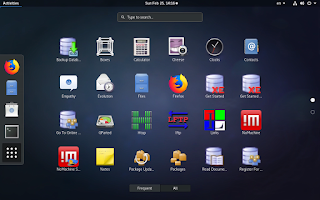

- Centos install meld how to#
- Centos install meld archive#
- Centos install meld software#
- Centos install meld password#
$ sudo rpm -i Installing a package with dnfĪlthough dnf operates on top of rpm, it provides very useful features like the management of software dependencies, and the ability to install software from the distribution repositories.
Centos install meld password#
It is also possible to provide an username and a password if authentication is required, including such information in the address: Say for example we want to install a package accessible via the ftp protocol the command to run would be the following: $ sudo rpm -i With rpm is also possible to install a package which is not on our local filesystem. Installing a package from a remote location If a previous version of package we are trying to install doesn’t already exist in our system, it is not installed. When it is used, only already existing packages are updated. The -F (or –freshen) option does something different. As we said above, upgrading a fundamental piece of software like the kernel in place is highly discouraged: it’s better to be absolutely sure that the new kernel works as expected before removing older versions. This means that after the newer version of the package is installed, the older ones are removed. In this case if a package doesn’t already exist in the system, it is installed if a previous version of the package exists, the package is upgraded. Things go differently when we use the -U option, which is the short for -upgrade. This method of installation is the recommended one to use when performing the installation of a new kernel: in such situations, the new kernel will coexist with the older one(s), so in case something doesn’t work as expected, it will be possible to use them as a fallback. Notice that here for same “package” we mean same exact version. Package gedit-2:3.28.86_64 is already installed If we try to install an already installed package (gedit in this case), we receive an error: $ sudo rpm -i gedit-3.28.86_64.rpm When we run the command above, the specified package is installed only if not already installed on the system. The syntax is very simple: $ sudo rpm -i packagename.rpm To install a new package we can run rpm with the -i option (short for -install). There are basically three ways we can install a package with rpm: they correspond respectively to the -i, -U and -F options. As said before, this will work only if the package has no external dependencies, since rpm is not able to manage it. One of the most basic operations we can perform with rpm is the installation of a package. Dnf was firstly introduced in Fedora 18, and does replace yum in the last version of Red Hat Enterprise Linux.

To manage the relationships between packages, and avoid the infamous dependency hell, first yum package manager (Yellow Updater Modified) and then its evolution, dnf (Dandified YUM), were adopted. Although very powerful, it is focused on single packages, so it is not able to resolve dependencies. To ease the management of rpm packages, the rpm package manager was created. RPM: The Red Hat Package Manager and yum/dnf
Centos install meld how to#
RHEL and CentOS uses the rpm package format which was invented by Red Hat itself: in this tutorial we will see how to install and manage rpm packages on Red Hat Enterprise Linux 8.

Centos install meld archive#
But what exactly is a package? A package is basically a compressed archive which contains the files associated with a specific software, like compiled binaries and libraries, plus metadata and instructions about where and how those files should be installed on the system, the external dependencies the software needs to run correctly and more. In RHEL 8 / CentOS 8, like in all modern linux distributions, software is organized in repositories, in the form of packages. $ – requires given linux commands to be executed as a regular non-privileged user # – requires given linux commands to be executed with root privileges either directly as a root user or by use of sudo command Permission to run command with root privileges. The utilities used in this tutorial are installed by default, there is no need for additional software. Requirements, Conventions or Software Version Used Software Requirements and Conventions Used Software Requirements and Linux Command Line Conventions Category


 0 kommentar(er)
0 kommentar(er)
